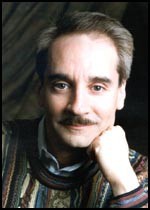Steve Nison - the legendary trader who changed the stock market
The everyday things that we see and use in the trading process do not seem surprising at the moment. Charts in the form of candles, lines, bars, as well as all the technical indicators down to the trading platform you work through were simply fantastic literally 20-30 years ago.
Just imagine, traders used a simple set of prices in the form of a tape, and the entire construction was reduced to a line chart. Naturally, in such a situation, any know-how in the direction of increasing information content made the trader an impeccable leader in the market.
Steve Nison is the most famous trader, thanks to whom the stock exchange world, and to be more precise, graphical analysis, moved forward.
Steve Nison is the founder of candlestick analysis, and it was thanks to him that it was born.
Yes, every trader can thank Nison for the appearance of a candlestick chart in your trading terminal. However, it was not the charting method itself that made him famous, it was those candlestick patterns and more detailed guides on how to analyze a candlestick chart that brought him such fame.
The transformation of an unknown analyst into a global figure
If we talk about the autobiography of Steve Nison, then we can safely say that this trader was also a spy. Just think, the person who made such a huge contribution to graphical analysis and introduced all stock traders to the world of Japanese candlesticks practically does not mention his autobiography anywhere.
Before becoming world famous, Steve Neeson worked as an ordinary analyst at Meryl Lynch. His area of responsibility was the analysis of futures market quotes. Having worked in this area, Neeson perfectly understood the importance of visual chart analysis, but in his era, Western market charts were, to put it mildly, not informative. Many traders of that time tried to build various figurative charts, but the public did not accept their ideas.
Steve Neeson, like many innovators of that time, also thought about this question. While studying the stock exchange activities of Asian countries, he came across a simple booklet issued by an unknown person in Tokyo. It was there that the first information about Japanese candles was contained. The most interesting thing is that in Japan itself these data were perceived as nonsense, so there were simply no people who could more or less clearly explain the essence of this approach.
However, Neeson was captivated by the very idea of visualizing such a graph and interpreting it on a graph. So, having delved into the study of Japanese candlesticks in more detail, Nison published the first booklet on this topic among the workers of the company in which he worked. By the way, this manual, which spanned several pages, was published at the expense of the employer. The booklet caused such a huge stir and positive responses that Neeson himself wanted to delve into this type of analysis in more detail.
Creation of books about trading.
Moving away from theory and closer to the practice of using candlestick analysis, he publishes the famous book “Japanese Candlesticks: Graphical Analysis of Financial Markets.” The publication of this manual brought enormous fame to its author, so Steve begins to enter the doors of the largest brokerage firms and banks as a trainer and consultant. His book was replete with practical examples that clearly confirmed the effectiveness of candlestick analysis.
In 1990, Steve Neeson published a second book entitled “Beyond Japanese Candlesticks.” It is in this book that the practical aspects of classical Eastern analysis are skillfully combined with European approaches, opening up new opportunities for realizing the fantasies of millions of traders.
Having gained enormous fame, Steve Nison began to actively teach Japanese candlestick analysis around the world.
His seminars attracted huge audiences, and the cost to get into his hall was prohibitive. So Steve Neeson is a consultant to Morgan Stanley Dean Witter and even The Bank of New York. He also created his own company and two websites that are engaged in training and analysis to this day.
